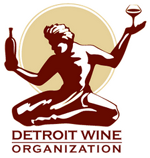From fertile valleys to rocky mountain tops, it seems as if every inch of Italy is planted with grape vines. Some of the wines are considered along with the world’s best, others are less distinguished. Since there is no way to explain Italian wine in 60 seconds this is a two part course.
Only a decade or two ago the general consensus for Italian wines was that they represented great value. A revolution in wine making has elevated the quality, and by extension, the prices of almost all Italian wines. The wines of Italy today are as likely to be destined for tables around the world, as they are to be enjoyed locally. A large percentage of the wines made in Italy are simple, and are made for local consumption, and this is the case for wine regions the world over. It is the exceptional wines that have raised the standards, and these are increasingly being made by a new generation which has learned to embrace all things technical.
As with any wine region, the trick to Italy is to learn as much as you can about the regions. Many of those that are listed here will not be found on your local wine shelves, but that still leaves a dizzying array of wines from all over the country.
The Regions
Basilicata (bah-zee-lee-cah-tah) A wine region in Southern Italy. Most of the wines are simple, and are best enjoyed locally.
Calabria (cah-lah-bree-ah) If Italy is shaped like a boot, then Calabria is the wine region at the toe. Mountainous country, the wines from this region are not well known elsewhere.
Campania (cahm-pah-nyah) A wine region in southern Italy, around the town of Naples. The wines are not well known outside of the region, but visitors to the active volcano, Mount Vesuvius, usually run across some examples in the local eateries.
Colli … (coh-lee) No less than 7 wine regions thoughout Italy begin with the word Colli. The quality and style of the seven wine regions are not in anyway related, but few are exported to the US.
- Colli Albani (ahl-bah-nee)
- Colli Berici (beh-ree-tchee)
- Colli Bolognesi (boh-loh-nyay-zee)
- Colli Euganei (eh-yoo-gah-neh)
- Colli Lanuvini (lah-noo-vee-nee)
- Colli Orientali del Fruili (oh-ree-en-tahlee del free-oo-lee)
- Colli Paicentini (pyah-tchen-tee-nee)
Emilia-Romagna (eh-meel-yah ro-mah-n yah) The Italian region north of Tuscany that is situated around the city of Bologna. Many visitors to Italy ignore this region because of the great deal of industry that is evident. What they do not realize is that this is the center of gastronomy for Italy. Parmesan cheese and Proscuitto Crudo both hale from nearby Parma, and Bologna is the cross roads for food from all over Italy. The most famous wine of the region is Lambrusco, a light, sometimes sparkling wine. Lambrusco is often overlooked as well, because the overly commercial Riunite is technically a Lambrusco.
Friuli-Venezia Giulia (free-oo-lee veh-net-zee-ah joo-lee-ah) The wine region in the northeastern corner of Italy. The wines tend to be high quality, and the labels are usually marked with the name of the grape. This makes the wines friendly and easy to buy for most Americans. Merlot and Pinot Grigio are among the best known red and white grapes grown here.
Latium (lah-tyum) The wine region in Italy around Rome. Most of the wine made here is white from the ubiquitous Trebbiano grape.
Liguria (lee-goo-ree-ah) A wine producing region of Italy that stretches along the Mediterranean from the French border down to Tuscany. The region is also unofficially known as the Italian Riviera and is dotted with famous resort towns.
Lombardy (lom-bar-dee) A principal wine producing region of Northern Italy.
Marche (mahr-kay) The Marches, as it is known in English, is an south eastern Italian region along the Adriatic Sea. This is the home of the well known white wine Verdicchio (which is both the wine and the grape name).
Piedmont / Piemonte (peed-mont / pyay-mon-the) One of the most important wine producing regions in Italy, it is situated in the northwestern corner of the country, up against the Alps. This is the home of the intense red wines Barolo and Barberesco, as well as the refreshingly light sparkling wine Moscato d’Asti and the well known sparkler Asti Spumante. Piemonte is the Italian name for the region.
Puglia (poo-lyah) A southeastern Italian wine producing region. Every country has a region that excels in making bulk wines, and this is Italy’s.
Sardinia (sar-din-ia) A large island off the coast of Italy. For generations the wines here were coarse reds, or almost sherry-like whites. Modern wine making has allowed the producers of this area to discover an entirely new direction, with lighter, fresher tastes.
Sicily (sis-ill-ee) This island is not only the largest in the Mediterranean, it is also one of Italy’s largest producers of wine. Marsala has long been the best known wine of Sicily. The oxidized white wine, that so many know for cooking, typified the wines made here until only a few years ago. New plantings on cooler hillsides and modern techniques have allowed the new generation of Sicilian wine maker to produce lighter, fruitier wines.
Trentino-Alto Adige (tren-tee-no ahl-to ah-dee-jay) The northernmost of Italy’s wine producing regions. A large amount of red wine is made here as well as whites, and even sparkling wines. This is a huge region with a great many wines and a great many grape varieties.
Tuscany (tuss-can-ee) A wine region in central Italy that extends from the city of Florence to the south. Some of the best known Italian wines come from this region. Notable are the Chianti wines, and Brunello Montalcino and Vino Nobile di Montepulciano. The rising trend to create Cabernet Sauvignon based, or blended wines, has led to the unofficial designation Super Tuscans for these expensive and much sought after wines. Sangiovese (or Brunello as one of the clones is called) is the important red wine grape of the region. Malvasia is the important white for quality, and Trebbiano for quantity.
Umbria (oom-bree-ah) The central Italian region that is home to the well known white wine Orvieto.
Valle d’Aosta (vah-leh dah-awss-tah) The smallest wine producing region in Italy. Skiers know the area for the famed Courmayeur ski resort, which is just on the other side of Mount Blanc from France’s famed ski town, Chamonix. The crisp, dry white wines of the region are enjoyed by skiers, but rarely seen elsewhere.
Veneto (veh-neh-toe) A large Italian wine region that includes the cities of Venice and Verona. Nearly a fifth of all the DOC wines of Italy come from this region. Soave and Valpolicella are two of the best known wines that are produced here.
Part two will include types of Italian wines and label information.


Leave A Comment